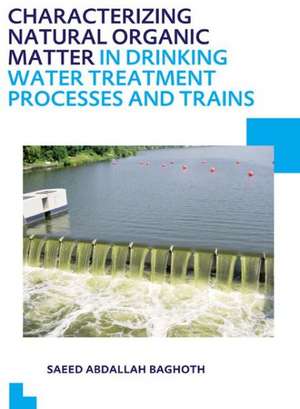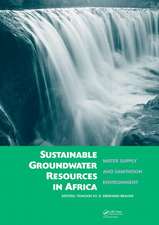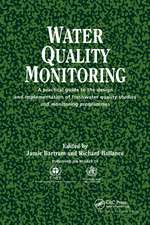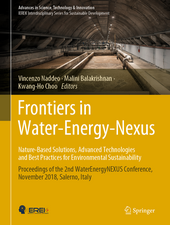Characterizing Natural Organic Matter in Drinking Water Treatment Processes and Trains: UNESCO-IHE PhD Thesis
Autor Saeed Abdallah Baghothen Limba Engleză Paperback – 10 dec 2012
High performance size exclusion chromatography and fluorescence excitation-emission matrices were used to characterize NOM relatively quickly and with minimal sample preparation. These and other tools were used to improve our understanding of NOM character and behaviour during drinking water treatment. The study demonstrates the potential of multiple NOM characterization tools for the selection, operation and monitoring of water treatment processes.
Preț: 329.48 lei
Preț vechi: 424.21 lei
-22% Nou
Puncte Express: 494
Preț estimativ în valută:
63.04€ • 66.00$ • 52.17£
63.04€ • 66.00$ • 52.17£
Carte tipărită la comandă
Livrare economică 05-19 aprilie
Preluare comenzi: 021 569.72.76
Specificații
ISBN-13: 9781138000261
ISBN-10: 1138000264
Pagini: 180
Dimensiuni: 210 x 297 x 10 mm
Greutate: 0.43 kg
Ediția:1
Editura: CRC Press
Colecția CRC Press
ISBN-10: 1138000264
Pagini: 180
Dimensiuni: 210 x 297 x 10 mm
Greutate: 0.43 kg
Ediția:1
Editura: CRC Press
Colecția CRC Press
Cuprins
1. Introduction
2. Characterization and influence of Natural Organic Matter (NOM) in drinking water treatment: A review
3. Characterizing natural organic matter (NOM) in drinking water: From Source to Tap
4. Tracking natural organic matter (NOM) in a drinking water treatment plant using fluorescence excitation−emission matrices and PARAFAC
5. Characterizing natural organic matter (NOM) and removal trends during drinking water treatment
6. Investigating the impact of water treatment on the fluorescence spectra of humic substances in surface and ground waters
7. Modelling and prediction of the removal of nom and formation of trihalomethanes in drinking water treatment
8. Summary and conclusions
2. Characterization and influence of Natural Organic Matter (NOM) in drinking water treatment: A review
3. Characterizing natural organic matter (NOM) in drinking water: From Source to Tap
4. Tracking natural organic matter (NOM) in a drinking water treatment plant using fluorescence excitation−emission matrices and PARAFAC
5. Characterizing natural organic matter (NOM) and removal trends during drinking water treatment
6. Investigating the impact of water treatment on the fluorescence spectra of humic substances in surface and ground waters
7. Modelling and prediction of the removal of nom and formation of trihalomethanes in drinking water treatment
8. Summary and conclusions
Descriere
Natural organic matter (NOM) generally influences water treatment processes such as coagulation, oxidation, adsorption, and membrane filtration. NOM contributes colour, taste and odour in drinking water, fouls membranes, serves as a precursor for disinfection by-products, increases the exhaustion and usage rate of activated carbon and may promote microbial growth in water distribution networks.
High performance size exclusion chromatography and fluorescence excitation-emission matrices were used to characterize NOM relatively quickly and with minimal sample preparation. These and other tools were used to improve our understanding of NOM character and behaviour during drinking water treatment. The study demonstrates the potential of multiple NOM characterization tools for the selection, operation and monitoring of water treatment processes.
High performance size exclusion chromatography and fluorescence excitation-emission matrices were used to characterize NOM relatively quickly and with minimal sample preparation. These and other tools were used to improve our understanding of NOM character and behaviour during drinking water treatment. The study demonstrates the potential of multiple NOM characterization tools for the selection, operation and monitoring of water treatment processes.

















